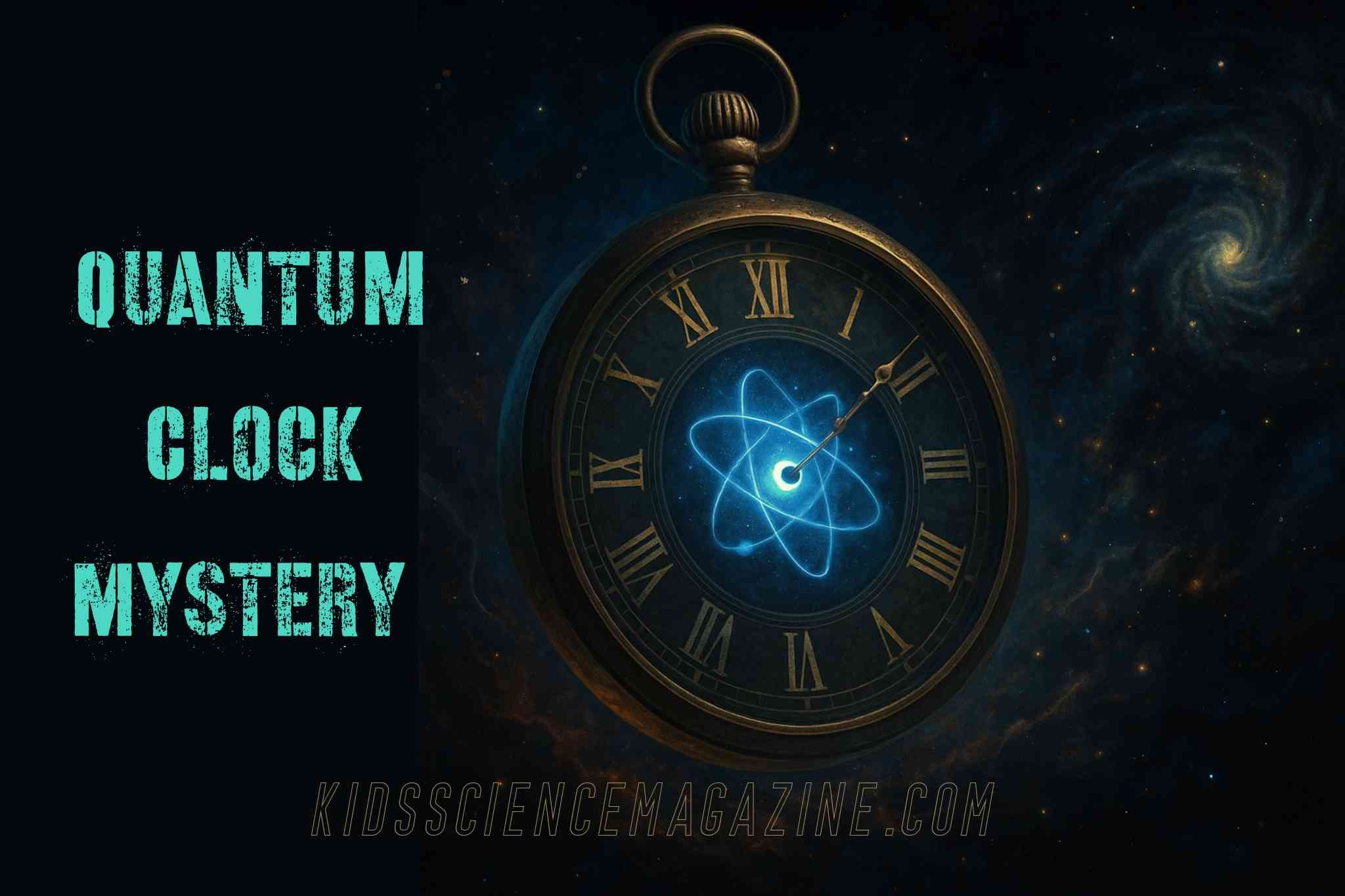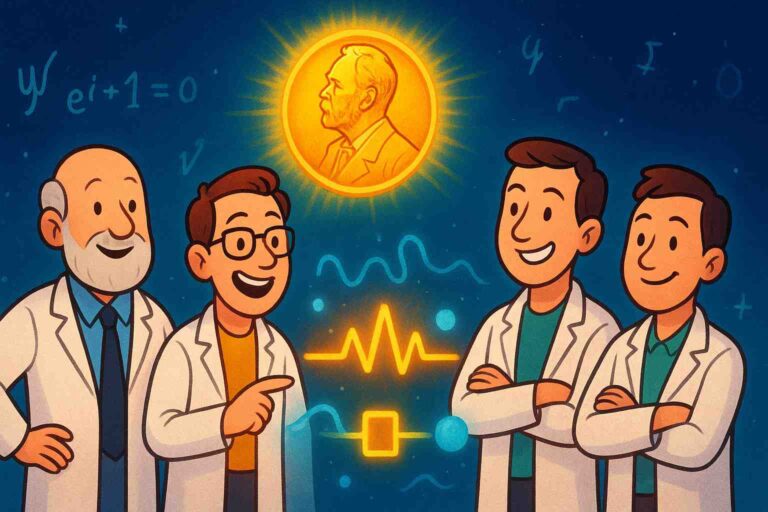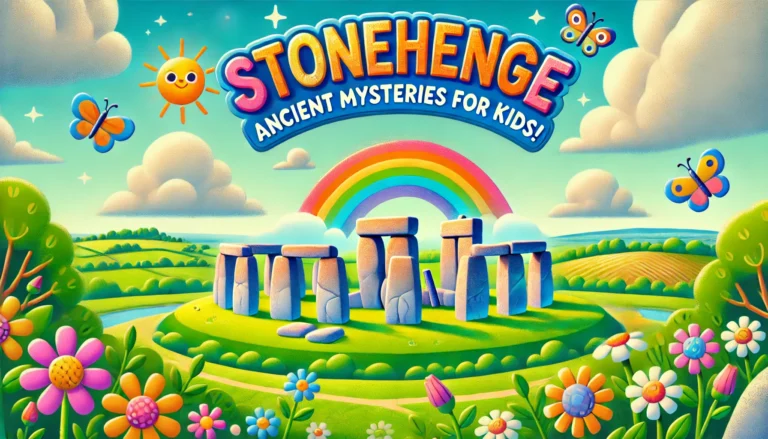
A tiny quantum clock reveals a billion-fold energy mystery: reading its ticks uses far more energy than making them. Kids discover why measurement makes time flow forward!
A Science Mystery from the Smallest World in the Universe
Deep inside a quiet laboratory at the University of Oxford, a tiny device no bigger than a grain of dust has revealed one of the strangest secrets in modern science.
It’s called a quantum clock, and it doesn’t tick like the clocks in your home.
It ticks when a single electron jumps — a hop so small you could never see it, even with a microscope.
The scientists who built it thought they understood how it worked.
But then they made a discovery so bizarre, so unexpected, that it created a brand-new mystery:
Reading the clock’s ticks uses a BILLION times more energy than the clock uses to tick.
Why?
What was stealing all that energy?
And what does this have to do with the flow of time itself?
Let’s open the mystery file…
🔍 Case File 1: A Clock Too Small to Hear
Traditional clocks tick because something inside them moves — a pendulum swings, a quartz crystal vibrates, an atom hums.
But a quantum clock?
It ticks when an electron leaps between two tiny spots called quantum dots.
Imagine a flea hopping between two grains of sand…
Now shrink that flea a trillion times.
That’s your quantum tick.
The scientists expected these ticks to use almost no energy.
And they were right.
The clock itself runs quietly… almost perfectly silent.
So the real mystery isn’t the ticking.
It’s something much stranger.
🔍 Case File 2: The Baffling Billion-Fold Energy Burst
To understand the clock, scientists needed to measure its ticks — to “listen” to the electron’s tiny jumps.
They used:
- Ultrasharp electric current detectors
- Special radio wave sensors
But the moment they tried to read the clock, something shocking happened.
Their instruments gobbled up a billion times more energy than the clock used to tick.
It was like:
- A mouse squeaking softly
- And a giant megaphone using a billion batteries just to amplify it
This wasn’t a mistake.
This wasn’t noise.
This was real.
The scientists had stumbled onto a clue about the deepest mystery of all…
What makes time flow forward?
🔍 Case File 3: The Moment Time Becomes “Real”
In the quantum world, things behave strangely.
Particles can do two things at once.
Events can go backward and forward.
Time gets… fuzzy.
But when we measure something — when we try to look at it — the quantum world changes.
Professor Natalia Ares explained the twist:
“We thought smaller clocks would make timekeeping easier.
But instead, the act of measuring the clock is the real energy cost.”
Her team discovered something mind-blowing:
⭐ The universe does not choose a direction for time.
⭐ We do — when we observe it.
The measurement process forces the quantum world to “pick” a direction.
It makes time run forward.
In other words:
Time flows forward because we look at it.
This is no longer science fiction — this is real physics.
🔍 Case File 4: The Hidden Energy of Information
Why does the measurement use so much energy?
Because every time the detector reads a tick, it has to turn quantum information (tiny electron hops) into classical information (signals we can record).
And that conversion — that “translation” — burns energy.
The more information you try to collect, the more energy you spend.
The researchers realized:
✨ The real cost of timekeeping isn’t in the clock…
✨ It’s in the act of learning what time is.
This changes everything scientists thought they knew about tiny devices like nanoscale computers and quantum sensors.
It’s a clue from nature itself:
Information has energy.
And information shapes time.
🔍 Case File 5: The Deepest Question of All
Co-author Florian Meier said it clearly:
“By showing that measurement gives time its forward direction, we connect the physics of energy with the science of information.”
This tiny clock has opened a doorway to one of science’s biggest mysteries:
Why does time only move forward?
Why can’t we rewind it?
Why are memories in the past, not the future?
The tiny quantum clock whispers an answer:
Time doesn’t simply exist.
We create its direction by observing the universe.
Mystery solved?
Not quite.
This discovery unlocks new questions — and new adventures for future scientists.
Maybe one day, you will be one of them.
⭐ Fun Facts: Quantum Time Edition
- Electrons can hop billions of times per second — perfect for tiny clocks.
- Time behaves differently in the quantum world than in the everyday world.
- Some quantum events look like they can go backward in time!
- Every measurement you make — even looking at a clock — uses energy.
- Scientists hope ultra-efficient quantum clocks will help future spacecraft navigate across the galaxy. 🚀
🧠 Kids Quiz: The Mystery of the Quantum Clock!
1. What makes the tiny quantum clock “tick”?
a) A swinging pendulum
b) A tiny gear turning
c) An electron jumping between two spots
d) A mouse running in circles
→ Correct Answer: c) An electron jumping between two spots
2. What surprising discovery did scientists make about the quantum clock?
a) It runs on candy
b) It can stop time completely
c) Reading the clock uses a billion times more energy than the clock uses
d) It glows bright pink
→ Correct Answer: c) Reading the clock uses a billion times more energy
3. Why does measuring the clock take so much energy?
a) The detector gets hungry
b) Turning quantum events into readable information takes energy
c) The clock is shy
d) Scientists used too many batteries
→ Correct Answer: b) Turning quantum events into readable information takes energy
4. What mysterious idea did the experiment reveal about time?
a) Time is made of chocolate
b) Time stops when you close your eyes
c) Measurement is what makes time flow forward
d) Time is faster underwater
→ Correct Answer: c) Measurement makes time flow forward
5. Why are quantum clocks important for the future?
a) They tell jokes
b) They might help spacecraft navigate
c) They can cook pizza
d) They grow on trees
→ Correct Answer: b) They might help spacecraft navigate
⭐ Bonus Wonder Question:
If your actions help decide how time flows…
What tiny moment will you choose to make meaningful today? ⏳💫






